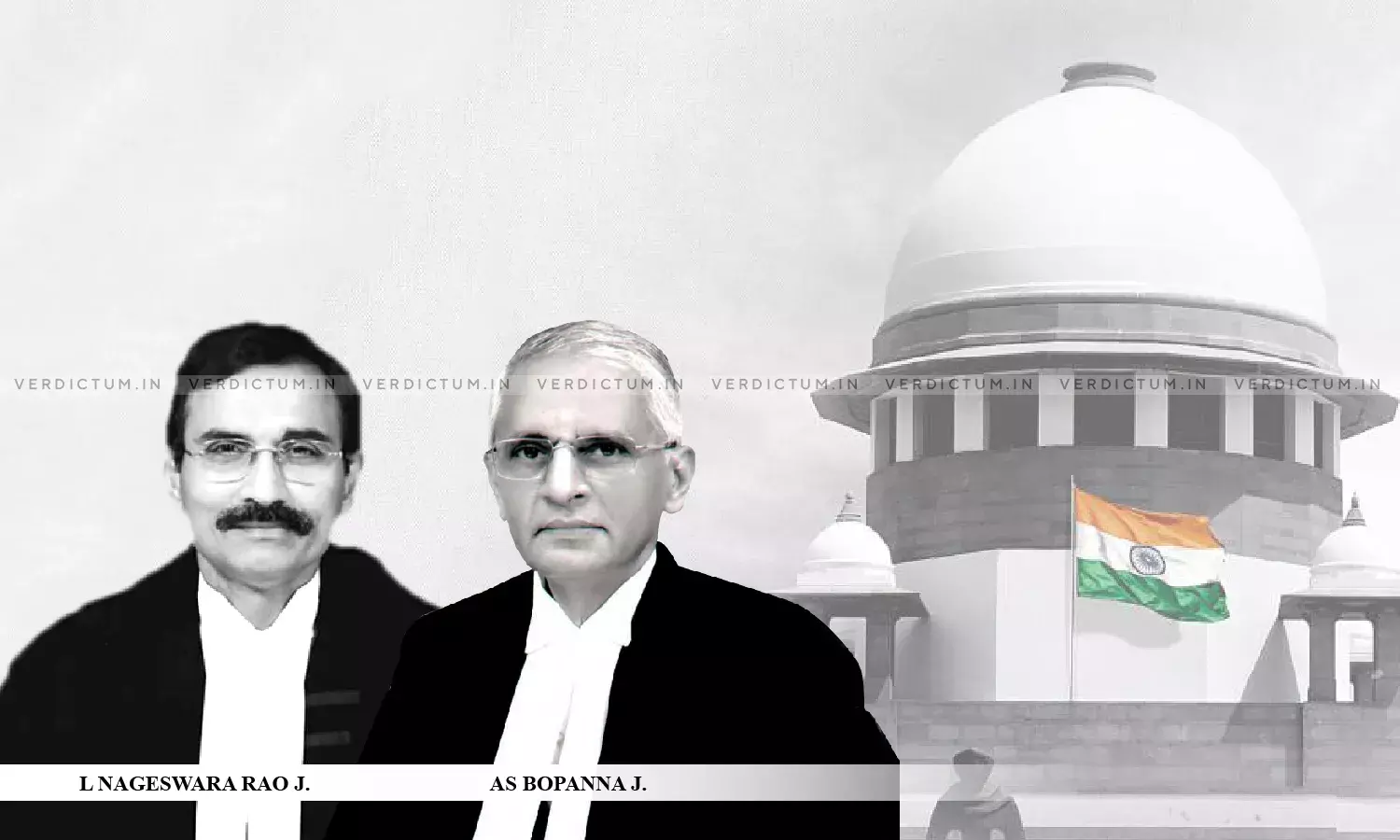Right To Claim Restoration Available If Property Was In Possession Throughout Under Karnataka Land Revenue Rules - SC
A Supreme Court Bench of Justice L Nageswara Rao and Justice AS Bopanna upheld a judgment passed by the Karnataka High Court, by dismissing the Appeal preferred by the State of Karnataka against the decision of restoring forfeited property.
To that end, the Supreme Court held, that "the possession of the property remained with the respondent throughout, which would satisfy the requirement to claim restoration under subrule (2) to Rule 119 of Rules 1966. When a factual finding is rendered to that effect, it will not arise for consideration in the limited scope available to this Court in a proceeding of the present nature."
AAG Mr Nikhil Goel along with Mr VN Raghupathy appeared for the State. Mr Raghavendra S Srivatsa with Mr PN Manmohan appeared for the Respondents.
The Respondent claimed to have succeeded a property, that was purchased by his ancestors in a public auction. The ancestors of the Respondent and the Respondent claimed to have continued in uninterrupted possession of the property. However, since the land revenue was not paid by them, the property was forfeited to the Government, although the property remained in the possession of the family and they continued to enjoy it.
Subsequently, the Government amended the Karnataka Land Revenue Rules, 1966, providing for the restoration of forfeited property if the application is made during a period of one year from the date of commencement of the amendment. The Respondent took benefit of the amendment and filed for restoration within the time prescribed.
The Respondents applications did not receive consideration, owing to which the Respondent approached the High Court seeking for a direction to consider the applications. The Single Judge disposed the Petition and also directed the Deputy Commission to dispose of the applications filed by the Respondent.
Aggrieved by the rejection of the applications, the Respondent filed another Petition before the High Court. The Single Judge allowed the Petition and quashed the previous order. He also directed the Deputy Commission to consider the applications afresh on merits and take into consideration other relevant reports. However, contrary to the directions issued, the claim of the Respondent was negatived by an order dated passed by the Additional Chief Conservator of Forest. The Single Judge took note of all these aspects of the matter and allowed the Petition.
The State approached the Supreme Court.
The Court opined that on the date when the right accrued to the Respondent to make an application seeking restoration, the status of the property remained the same and the transfer of the property was only from the Revenue Department of the Government to the Forest Department of the same Government, i.e., from one arm to another.
Therefore, the Court held that the land could not be construed to be disposed of. Further, the Court opined that the Respondent was entitled for consideration of his application for restoration, as neither at the time when forfeiture happened nor at the time when the property of Respondent was turned over to the Forest Department by an executive order, was there any proceeding to indicate that the respondent or his predecessor was evicted and vacant possession was handed over to the Forest Department.
To that end, the Court opined that "even if at this point there is sufficient tree growth over the lands which were transferred to the Forest Department, the property to which the respondent claims cannot be considered in today's perspective. Though the lands were made over to the Forest Department by an executive order, the factual finding indicates that the respondent continued to be in possession and had developed coffee and areca plantation which in any event will require tree growth. The right which accrued to the respondent to seek restoration in the year 2000 is within about six years from the date of Government Order during 1994. In such event, the Forest Department could not have intervened in the present situation, unmindful of the earlier orders."
Holding that the Appeal was devoid of merit, the Supreme Court dismissed the Appeal.
Click here to read/download the Judgment




